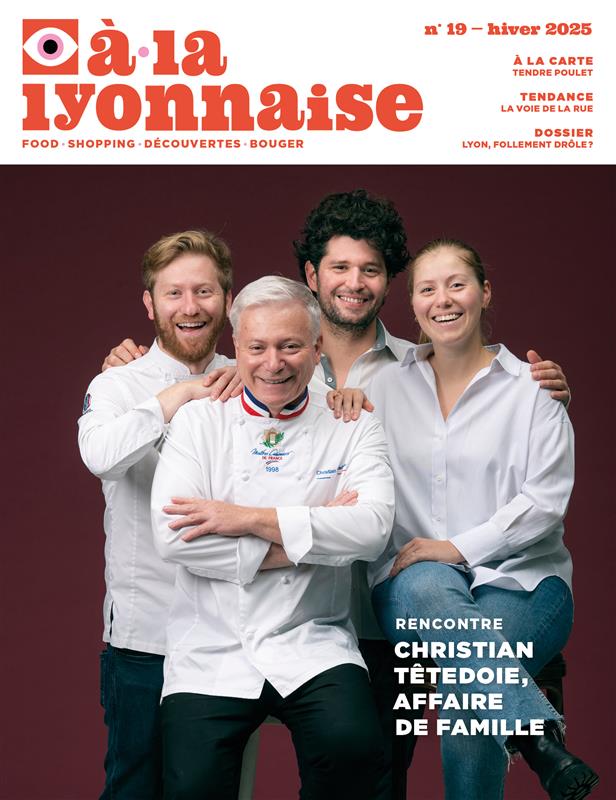Dates that left their mark on Lyon

14 February 1975
On that day, Auditorium Maurice Ravel was inaugurated in Lyon’s 3rd district, following construction works that began in 1972. The shell-shaped steel and concrete structure built by architects Charles Delfante (town planner) and Henri Pottier, winner of the Prix de Rome, was designed to house the Lyon National Orchestra (ONL). It was then France’s largest music venue boasting a height of 31.50 metres, a 2,100-seater symphony hall, a 400-sq. m stage and a vast atrium. The auditorium received the ‘Architecture contemporaine remarquable’ (remarkable contemporary architecture) quality label in 2012. To mark its 50th anniversary, a special programme will be put on by the ONL over the course of 2025.
3 September 1944
On that day, the troops of the 1st Free French Division (1re DFL) led by General Diego Brosset entered Lyon with help from the US 36th infantry division and the French Forces of the Interior (Forces Françaises de l’Intérieur or FFI). The day before, the Germans had fled the city after blowing up all the bridges, except the L’Homme de la Roche footbridge crossed by the liberating troops. After four years of war, the French flag flew once again over Place Bellecour and Lyon city hall. A few days later, on 14 September, General de Gaulle visited Lyon, which was subsequently named Capital of the French Resistance.
13 August 1766
On a journey between Paris and Geneva, Mozart spent four weeks in Lyon from late July to mid-August 1766. Aged ten-and-a-half years old, he toured the courts of Europe accompanied by his father and his sister, Nannerl, a violinist. On the 13th of August, he performed a harpsichord concert together with her at the Maison de Concert, which no longer exists.
The young prodigy did not compose anything during his stay, which did not seem to have been particularly memorable for him… other than the public hangings that he watched! We do know that Mozart senior made the most of the stay in Lyon to have some silk clothes made.
3 May 1894
If you say the word ‘vélodrome’ to a French person, they will probably think of Marseille, its stadium and its football team. However, not many people know that the velodrome of Lyon, erected in Tête d’Or Park in May 1894, was inaugurated 81 years before its counterpart in Marseille. Another reason to be proud to be Lyonnais! Built for the world’s fair in Lyon, it hosted the cycling world championships of 1989.
Renamed ‘vélodrome Georges Prévéral’, in honour of a former cyclist who became the founder of Sprinter Club Croix-Rousse Caluire, the site now welcomes track cyclists and major sports events like the tennis tournament ATP Lyon Open.
5 December 1998
A moment of pride! On that day, 427 hectares of the city of Lyon, or 10% of its total surface area, became part of UNESCO’s World Heritage List. Among the areas included were the hill of Fourvière, Vieux-Lyon (Old Lyon) and part of the Presqu’île, from Place Bellecour to the top of the slopes of Croix-Rousse hill. The listing highlighted in particular the historical site’s “exceptional universal value” and its harmonious development over the ages, from ancient Lugdunum to the nineteenth century. To celebrate these 2000 years of history, you can (re)discover the entire site through a guided tour created especially for the 25th anniversary of the UNESCO listing.
Visit shop.visiterlyon.com to find out more.
23 November 1803
Day of the official opening of the Musée des Beaux-Arts de Lyon (Museum of Fine Arts). Following the eviction of the nuns during the French Revolution, the Abbaye des Dames de Saint-Pierre, as it was then known, was used to conserve works of art. On the 1st of September 1801, a decree issued by the Minister of Interior, Jean-Antoine Chaptal, led to the
foundation of the ‘Conservatoire des Arts’ (Conservatory of Arts) here. 110 paintings were transferred to the museum by the Louvre and it acquired others. As of the 23rd of November 1803, the general public could admire paintings by local artists and great masters. This collection, which was added to over the years through donations and acquisitions, earned the Musée des Beaux-Arts the title of France’s richest museum after the Louvre.
29 June 1900
This was the day on which Antoine de Saint-Exupéry was born, in Lyon. As well as being an airman, flying for the 'Aéropostale' air mail service and the air force, he was a journalist and author of several novels, the most famous of which was The Little Prince. This year 2022 is the 80th anniversary of the publishing of this poetic and philosophical work, which can remains the most translated book even after the Bible (it can be read in no less than 535 languages!). 'Saint-Ex', as he is affectionately known by the people of Lyon, disappeared after being shot down during a flight from over the Mediterranean during the Second World War. A statue of him, along with the Little Prince, stands on the square of Place Bellecour.
1 May 1989
On this day, the International Criminal Police Organization, better known as ‘Interpol’, officially set up its headquarters in Lyon’s 6th district. The idea for this originated as early as 1910 with Edmond Locard, who lived in Lyon and was the founder of forensic science. Still today, the organisation’s 195 member countries work together to locate, track and arrest globally wanted criminals.
12 February 1939
This is the time when drilling of the tunnel beneath Croix-Rousse hill began. The municipal authority's aim was to reduce congestion in the Presqu'île (peninsula) district by absorbing road traffic between the rivers Saône and the Rhône. 1 757 metres in length and 14,5 metres in diameter, the tunnel was opened on 19 April 1952. It was renovated in 2013, when another tunnel for low-pollution transport was opened alongside it, accessible to bicycles, pedestrians and public transport.
8 September 1975
Back at time, Lyon's mayor was Louis Pradel. His enthusiasm for public works earned him the nickname 'Zizi Béton' (translator's note: literally 'concrete willy'!). One of Lyon's most iconic urban development schemes was completed in the Part-Dieu district, including a new shopping centre, which was the largest of its kind in a city centre in all of Europe! Stretching out over five floors, the building was officially inaugurated on September 8th 1975. It has been redeveloped several times since.
15 July 1783
On that day, the first Pyroscaphe, an early paddle steamer, was launched on the Saône, near Saint-Jean Cathedral. Weighing more than 150 tons and measuring 46 metres in length, the boat reached Ile-Barbe in 15 minutes, watched by an enthusiastic crowd. Its inventor, Claude de Jouffroy d’Abbans, who moved to Lyon in 1781, had every right to be proud of the accomplishment. Bizarrely, however, his request for a patent was refused by the city of Paris, which was irritated at being beaten to it! There is a plaque commemorating the event on the north face of the Palais Saint-Jean building.
2 May 1894
Have you ever heard of the ‘Tour Avellan’? Or the ‘Tour Paufique’ perhaps? Here’s a clue: its top is the highest point in Lyon. If you haven’t guessed already, it is the metal tower on Fourvière Hill, which was originally named after the Russian navy admiral Avellan. In the end, however, the name ‘Paufique’ was used, in honour of the chairman of the board of directors at the time of its construction. Built for the ‘Exposition universelle, internationale et coloniale’, a world’s fair held in Lyon in 1894, it was inspired by the Eiffel Tower and offered a panoramic view over the city and the pavilions in Tête d’Or Park. It was open to visitors until 1953 and is now used as a radio and television relay station.
The winter of 1964
Lyon once had its own ski slope. We kid you not. In 1964, Lyon was the only city in Europe to have an urban ski slope. AT an altitude of 280 metres, this blue piste, complete with chair lift, ran down a 20% slope, measuring 300 metres in length and 30 metres in width. It was hugely popular, tallying up 270,000 paid entrances per year and two million lifts between 1964 and 1975, when it was closed. So, what was the problem? The synthetic fibre surface of the slope, which was expensive and fragile, caused painful falls, with frequent burns and broken fingers, and the equipment was becoming damaged. The slope was converted and is now reserved for downhill mountain biking.
21 November 1831
The Canut revolt. Following three days of strikes the Canuts (as Lyon’s silk workers were known), tired of their miserable working conditions, rose up. They stood against their clients, the silk merchants, and the arrival of the new Jacquard looms, which deprived them of work.
Their demands? A minimum price for their products. Placed on their black flag, their motto spoke volumes of their determination: “Vivre en travaillant ou mourir en combattant“
(Live working or die fighting). This was one of France’s first big labour movements and it won the day. Their demands led to the signature of a minimum tariff on 25 October 1931, but this was later cancelled by Louis-Philippe, triggering the Canuts revolt.
This minimum wage, the forerunner of the minimum wage, was finally achieved in 1864, but in a watered-down version.
In 2021, we in Lyon celebrate the 190th anniversary of this revolt in which, for the first time in history, an educated guild rose up to demand dignity at work.
27 August 1950 at 3 pm.
On that day, 3 000 fans gathered in Gerland stadium to watch the kick-off of the first official match played by a young football club: Olympique lyonnais (OL).
Forty seconds later, Georges Dupraz scored against CA Paris, notching up the very first goal in OL's history. Final score 3-0. Several months later, the club created in May 1950 became the champions of France's second division.



